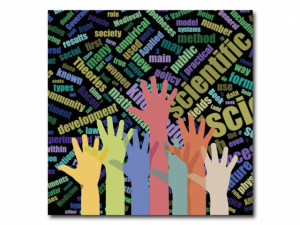Becoming An Anti-Racist Science Teacher
Sometimes science pretends it is “neutral” or “objective”, when in fact we know that science, like all institutions in our society, is subject to bias and systemic prejudice. What is our responsibility to become anti-racist science teachers? If we believe that all students deserve an equitable education, and that the pursuit of science will be at its best when everyone has an opportunity to become engaged, then we must shift our practices to look at how we can be anti-racist.
In our classrooms, it isn’t just good enough to be fair and equal. White educators need to actively let our Indigenous students, black students and students of colour know that we understand the world is systemically biased against them, and that we are working to change that. We also need to support and uplift our Indigenous, black and people of colour colleagues.
Fortunately, we currently have some excellent resources to support us in this challenge. STEM teaching tools is has an excellent resource on Social Justice in Science. US Educator Daniel Morales Doyle has an detailed podcast on the topic, that includes a shared Chemistry lesson. Also the NSTA’s most recent edition of Science and Children focuses on equity, and most of the articles are free on line.
If you are continuing to work on developing depth to the Indigenous perspectives in your science teaching, Knowing Home: Braiding Indigenous Science and Western Science by Gloria Snively and Wanosts’a7 Lorna Williams from UVic is an excellent resource.
Finally, if you want an example of how you can use studies as part of social justice and science, consider using this piece from Science Friday with your students: Research Shows Peaceful Protest Depends on Police Behaviour.